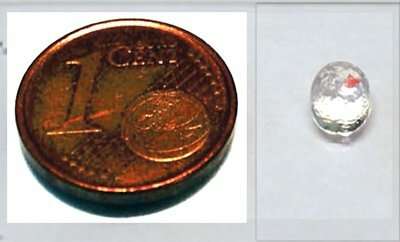3-D-printed tumor model shows interaction with immune cells

Around a glioblastoma, a very aggressive brain tumor, cells of the human immune system help the tumor instead of attacking it. To explore the interaction of these cells, scientists of the University of Twente have created a 3-D-bioprinted mini model of the brain. Compared to existing lab models, the results using this 3-D model match patient data much better. It will thus be a valuable way of testing new drugs, and could reduce the number of animal trials. The research is published in Advanced Materials.
Research into immunotherapy, stimulating the immune system to fight cancer or other diseases, led to a Nobel Prize in 2018. Some immune cells show contrary action, becoming accomplices of tumor cells. Such is the case with the cells around a glioblastoma, so-called macrophages, which infiltrate the tumor and help it spread. The newly developed 3-D model, a few millimeters in diameter, can be studied far more easily than 2-D tissue slices or animal models—and the results show a striking resemblance to actual patient data.
Thanks to developments in 3-D bioprinting, the UT researchers created a miniature brain model representing the delicate tissue around the tumor, including the macrophages. While printing, space was reserved for the tumor cells. It is possible to remove the tumor as a whole for studying the effect on the remaining cells. The current model does not include nerve cells or blood veins. This would complicate the study of cell interaction. It is, however, possible to add new cell types step by step, getting nearer to a realistic brain. In that case, glioblastoma, which spreads like an octopus and is thus difficult to remove operatively, may be demonstrated in a model, as well.
The basic tumor micro environment (TME) that was printed is already a valuable source of information. "For certain tumor markers, we see that they are up to a 1,000 times higher than we observe in 2-D studies. This approaches realistic values far better," says Marcel Heinrich.
This clearly has an effect on medication, as well: In the past, treatment that worked well in animals and 2-D-lab experiments sometimes failed in clinical trials. The 3-D model shows whether the dosage should be higher, for example. One of the most challenging aspects is determining if macrophages can return to their original functionality, and start attacking tumor cells again.
The promising results of a basic tumor microenvironment indicate that it can be used for other types of tumors, as well. A major advantage is that this new 3-D model will reduce the need for animal testing.
More information: Marcel Alexander Heinrich et al. 3D-Bioprinted Mini-Brain: A Glioblastoma Model to Study Cellular Interactions and Therapeutics, Advanced Materials (2019). DOI: 10.1002/adma.201806590

















